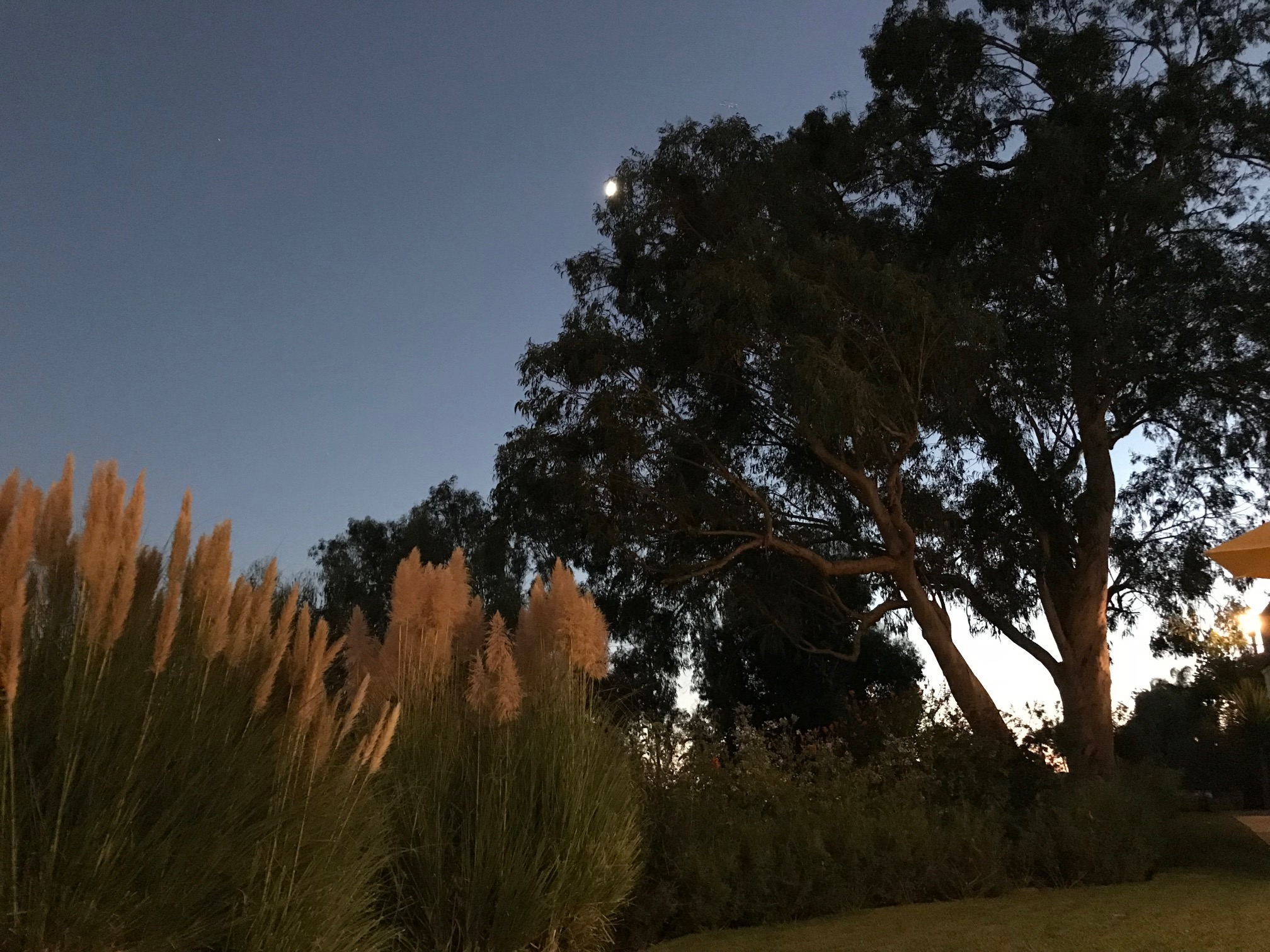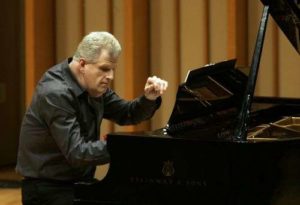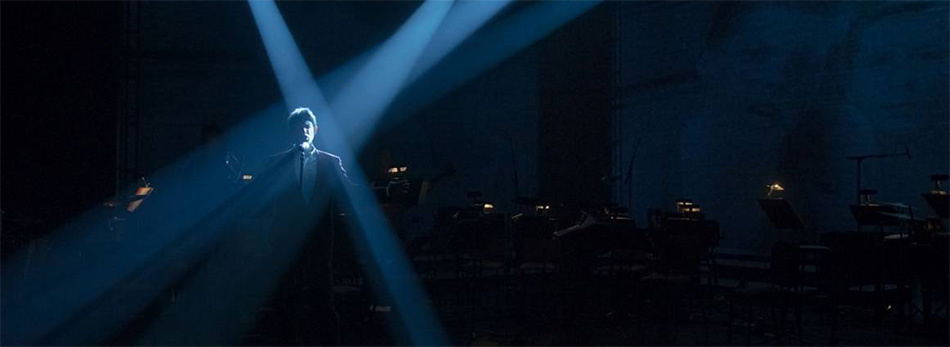Your cart is currently empty!
Tag: Juhi Bansal
-

A Little Night Music: 21c Liederabend, Op. L.A.
So much of contemporary art and music is preoccupied with a space, both physical and cerebral, between layers, liminal boundaries – the space between potential and actuality; the ‘what-if’ imponderables of what-was, what-might-have-been, and what-might-be. It’s both archaeological and futuristic. We’re peeling away layers of (terrestrial) crust, even as we’re reaching for a future (and stars) that might not be there.
I came away with something like this threshold sense from Disney Hall’s 21c Liederabend, Op. L.A., a co-production of Beth Morrison Projects and Paola Prestini’s VisionIntoArt, presented under the auspices of the Los Angeles Philharmonic’s Green Umbrella series – with John Adams both conducting the Philharmonic’s New Music ensemble and contributing excerpts from his own I Was Looking at the Ceiling and then I Saw the Sky. Like the John Adams songs, much of the programming was excerpted from more extensive song-cycles or quasi-operatic or theatrical works in progress, with visual (mostly video) elements that, with only one or two exceptions also appeared to be works in progress – some of them rough approximations of what they might evolve into. Others just plain rough. The video was projected onto a four-screen array – one large square screen above three smaller rectangles – which in at least one instance (the Hubble Cantata) spilled over beautifully into the Gehry ‘french-fries’ organ installation and surrounding space. There was a certain amount of frictive buzz about the video at intermission with a number of vocal complaints about the quality, or even the need for it – especially when the music itself was so new and the focus was clearly on the musicians and vocalists. It was hard to argue the point when – with musicians like Vicki Ray, the brilliant L.A. Phil woodwind crew, vocalists like Peabody Southwell, Nathan Gunn and Cedric Barry, the incomparable Timur and his genius Dime Museum, Jessica Rivera (and I won’t go on) – music and lyrics were in fact more than enough. For the moment….
There were no supertitles because of the video installation, so I (and most of the audience I have to guess) really were focused on the songs by themselves. But I could understand the impulse to give a kind of storyboard glimpse into the stories and production ideas that fed into them as parts of longer song cycles or full-blown opera or theatrical productions. Even if it only worked as an adjunct to the (at moments) brilliant live performances, it never seriously intruded, while giving a hint (or more) of where such performances might ultimately be taken.
The video was also used for introductions to the songs/selections by the composers themselves. This was both slightly offputting and bemusing. Did I really need to hear this? I wondered; yet it was undeniably arresting. Then half the time I found myself still more surprised by the music that had actually been composed. The evening was fully of these little starts and jumps. Straightaway I was surprised (pleasantly) by Adams’ distinctly non-Minimalist I Was Looking…. Complex and multi-layered, heavily jazz-inflected especially in the brass and winds, yet steadily driving through the polyrhythmic textures, the songs evoked different moods to match their episodes: a cop self-righteously arresting an innocent bystander, the carnival of confusion (and still more self-justification) that follows; and an epiphanal moment in the somewhat delayed (non-)resolution.
Without addressing the totality of the Adams songs or their success (I liked what I heard), the moment of ‘non-resolved epiphany’ set the tone for an evening that was continuously taking us by surprise in ways we could scarcely define. Listening to David T. Little’s less-than-promising description of his project for Timur and the Dime Museum, I steeled myself for disappointment – it sounded like such a mashed rehash of ideas overworked to death by everyone from Reich to Ashley to Chris & Cosey of Throbbing Gristle – to, I don’t know, Brion Gysin??? The title alone plunged me into despair (‘Artaud in the Black Lodge??’ – I have my apartment for that….) Well, maybe it was that ‘I don’t know’ factor (then too, the texts by Anne Waldman date back to that period) – but, what poured forth from Timur and his genius mates (including Daniel Corral, genius in his own right), was dark, steely (yes, a little ‘industrial,’ too), also chromatic, slashing, soaring and brilliant. It didn’t hurt that Timur was in especially fine voice – taking the near baritone-lows and soaring mezzo/soprano highs with unsurpassed clarity and brilliance.
The dark cathode-ray industrialism of Little’s Artaud (the video projections were by S. Katy Tucker) were a stunning contrast to the white light/sand/snow imagery of the Jacob Cooper/Greg Alan Brownderville songs that preceded it, from Ripple the Sky (an L.A. Phil commission), in which the video was by Cooper himself. Here, the largely high-register, microtonal music seemed almost overwhelmed by the alternately desert/alpine imagery – blinding white sand/snow/salt – appropriate for an elegy to a desertified planet – fading out into lights and monitors; but leaving the audience without any real ‘shards of song’ to hold onto.
Leaha Maria Villareal’s Never Not – with its Beckett-ian text by Adara Meyers – might have adopted a comparable white-out aesthetic, but worked with a slightly more chromatic palette drawn from nature (or at least viewed through a time-lapse lens); also more musically chromatic and beautifully textured with string quintet, keyboards, woodwinds, chimes, and most importantly Peabody Southwell’s sharp, emphatically phrased vocal. Ted Hearne’s when you hear, taken from his Sound From the Bench, with a text by Jena Osman, made reference to a line sampled from a text on ventriloquism by Charles Henry Olin, “when you hear that distant sounding drone, / you know you have your mouth as it should be,” but its successfully imparted sense of displacement relied heavily – not only on the supple, jazz-inflected musicianship (cf., Miles Davis, Ornette Coleman – with a touch of digital delay) of Taylor Levine and James Moore and their New Music cohorts – but on the robust choral tapestry of the Los Robles Master Chorale (under Lesley Leighton’s. direction). (The video – a grid that morphed from curtain walls to a matrix of spinning ventriloquist dummies was serviceable – but nothing as breathtaking as the music.)
Paola Prestini’s excerpts from The Hubble Cantata – inspired by the work of Mario Livio on the Hubble Space Telescope – could not help being the high point of the evening visually as well as musically – with its spectacular Hubble telescope photography of galaxies, nebulae and supernovae in deep space spilling over the screens and into the vaults of Disney Hall. But notwithstanding the ‘Champagne supernova’ of the L.A. Phil musicians, the sonorous Los Robles Master Chorale, and the visuals, I wondered if it were simply Mario Livio’s own words – spoken by Livio himself – that were its most inspiring aspect. It brought the evening beautifully full circle: the species that rarely seems capable of seeing beyond its own ceilings found a moment of cold comfort staring into the cosmos. We’ll be joining those bright and dark stars soon enough.


